Definitely didn’t want to see this, with three weeks to go, especially since it’s the first poll since June, if I’m not mistaken, to show a (slight) lead for Ed Gillespie. Blech.
P.S. According to Ralph Northam’s communications director David Turner, “Fwiw, the @MonmouthPoll overstates GOP primary voters by 13 when compared to what happened in 2013. ’17 D primary turnout was nearly double.”
Regional partisan divides widen; Eastern/Central VA up for grabs
West Long Branch, NJ – The campaign for governor of Virginia remains up for grabs, with Republican Ed Gillespie and Democrat Ralph Northam locked in a one point race. The Monmouth University Poll finds the race becoming more regionally divided, with Gillespie widening the gap in Western Virginia and Northam picking up steam in Northern Virginia. Northam has a better net favorable rating, but Gillespie has built issue advantages in some key areas.
Currently, 48% of likely voters support Gillespie, the former national GOP party leader, and 47% support Northam, the Commonwealth’s current lieutenant governor. Libertarian Cliff Hyra gets 3% of the vote and 3% are undecided. Last month, Northam had a 49% to 44% edge over Gillespie while the race was tied at 44% each in July.
“This has never been more than a five point race in Monmouth’s polling, and that means either candidate has a very real shot at winning this thing. We have seen lots of little movement that has either helped or hurt each candidate but with neither one being able to break out,” said Patrick Murray, director of the independent Monmouth University Polling Institute.
Regional political differences play a significant role in Virginia election outcomes. Northam has expanded his vote share in Northern Virginia to 64% over 32% for Gillespie, compared with a 56% to 39% lead in September. Gillespie, on the other hand, has built up his lead in the conservative western part of the Commonwealth, now with a 64% to 31% lead over Northam there compared with a 50% to 43% edge last month. Eastern Virginia – Northam’s home region which backed Democrats in recent elections for governor and U.S. Senate – has become more competitive, now split at 48% for the Republican and 45% for the Democrat, whereas Northam had a 49%-40% lead in September. Central Virginia – which tends to be a swing region – remains tight at 47% for Gillespie and 44% for Northam, which is similar to September’s close margin of 49% Northam and 48% Gillespie.
“As the northern and western parts of Virginia revert to their partisan norms, the battle for swing voters will occur right down the I-95 corridor,” said Murray.
The poll found the Republican nominee has gained ground on some key campaign issues, particularly in conservative and swing areas of the state. Among all Virginia voters, Gillespie is preferred over Northam on handling jobs and the economy by a 41% to 29% margin, which is slightly better than his 38% to 33% edge on this concern in September. In particular, Gillespie now has a 43% to 24% advantage on the jobs issue in Eastern Virginia, reversing a 31% to 37% deficit there last month.
Gillespie also maintains his advantage on handling crime – 40% of Virginia voters prefer the Republican and 24% choose the Democrat. Gillespie had a 35%-27% edge on this issue in September. He has enjoyed big gains on this concern in Western Virginia, where he now holds a 55% to 13% advantage over Northam. Last month, Gillespie had a smaller 41%-26% advantage on the crime issue in this region.
“Painting Northam as soft on crime, especially with the MS-13 gang spots, appears to have been effective. This is a game of inches right now, so any small advantage counts,” said Murray.
Northam, on the other hand, continues to have the upper hand when it comes to handling health care (42% to 32%) and education (39% to 27%). Both of these gaps are slightly, but not significantly, more narrow than in September when the Democrat had a 45%-29% edge on health care and a 45%-28% edge on education. Most of this slippage comes from voters in the western part of the Commonwealth, where Gillespie is now preferred over Northam on health care (44% to 28%) and education (34% to 22%). Northam had held a slight advantage on both issues in Western Virginia just last month (40%-36% for health care and 40%-34% for education).
“In last week’s debate, Northam made a specific appeal to voters in the western part of the state on issues such as education and health care. It doesn’t appear to have worked,” said Murray.
Northam’s campaign has tried to make Donald Trump an issue in this contest, but few voters say the president is a major factor in their vote for governor. This tactic does appear to be helping the Democrat in the DC suburbs, however. Just over 4-in-10 Commonwealth voters say Trump is either a major (29%) or minor factor (14%) in their gubernatorial vote choice. This has changed very little from a Monmouth University Poll taken in July. In Northern Virginia, however, more than half (54%) say Trump is a factor in their vote, which is up from 41% who said the same three months ago. The president’s job rating among all likely voters stands at 38% approve and 55% disapprove, which is nearly identical to his 40%-55% rating last month. His rating is more negative, though, among NoVa voters at 20%-73%.
“It is difficult to tease out a specific Trump effect from all the other considerations Virginians make in deciding how to vote in this race. But it does appear that the president may be an increasing factor in places where Democrats tend to dominate, which could end up helping Northam’s turnout in the DC suburbs,” said Murray.
Northam’s campaign is also trying to portray the GOP nominee as a lobbyist who is out of touch with Virginia voters, but there doesn’t seem to be a lot of differentiation between the two candidates on this metric. Nearly half of likely voters (48%) say Gillespie understands the day to day concerns of people like them, while 39% say he does not. Similarly, 45% of voters say Northam understands the day to day concerns of people like them, while 39% say he does not.
Overall voter opinion of Gillespie is split at 41% favorable and 37% unfavorable – compared with 42%-31% last month. Overall voter opinion of Northam is more positive at 40% favorable and 27% unfavorable – compared with 45%-27% last month.
“Ralph Northam is the less disliked candidate, but he can’t shake Ed Gillespie on some key issues,” said Murray.
Northam’s vote share may also have taken a slight hit by a drop in his current boss’s approval rating. Governor Terry McAuliffe earns a 49% approve and 37% disapprove rating from voters likely to cast ballots in this year’s race. While this result is still a net positive, it is down slightly from the incumbent’s 55%-36% rating last month.
The Monmouth University Poll was conducted by telephone from October 12 to 16, 2017 with 408 Virginia residents likely to vote in the 2017 gubernatorial election. The results in this release have a margin of error of +/- 4.9 percent. The poll was conducted by the Monmouth University Polling Institute in West Long Branch, NJ.


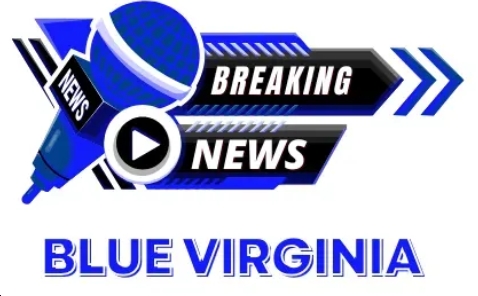 Sign up for the Blue Virginia breaking news newsletter
Sign up for the Blue Virginia breaking news newsletter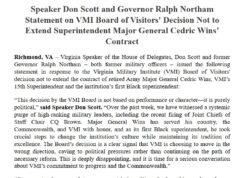
![With CNBC’s “Best State for Business” Rankings Finalized Soon, Gov. Ralph Northam’s Former Chief of Staff Clark Mercer Wonders, “Will North Carolina match Virginia [which held the title in 2019-2021] and make it a three-peat?”](https://bluevirginia.us/wp-content/uploads/2024/03/threepeat-238x178.jpg)
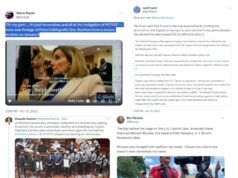

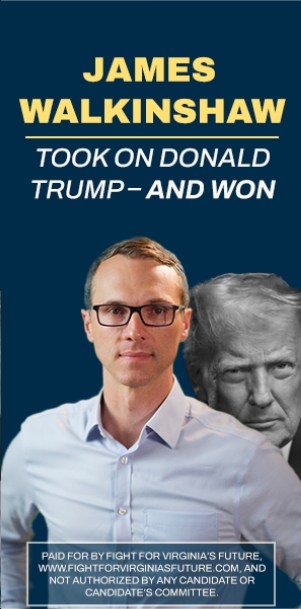
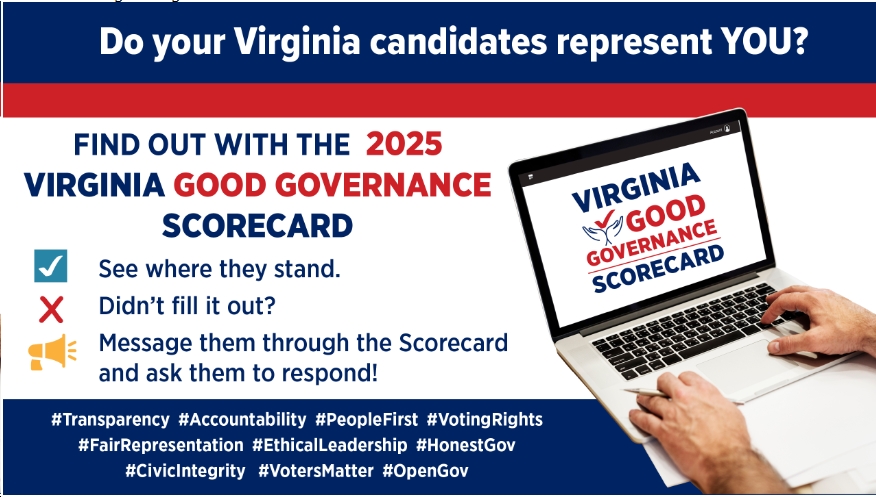



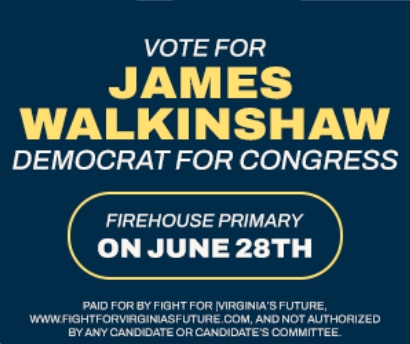
![Video: Speaking to a Packed, Fired-Up House at the Opening Night of the 2025 VA Women’s Summit, Sen. Tim Kaine Rips Youngkin – “If you won’t stand up for [UVA], will you stand up for ANYTHING?!?”](https://bluevirginia.us/wp-content/uploads/2025/06/kainewontstandup-100x75.jpg)

